1.1. Satellite (Definition)
A satellite is any object that orbits something else, as, for example, the Earth orbits the sun. There are hundreds of satellites in operation. They are used for diverse purposes such as weather forecasting, television signal amateur radio and internet communications and the Global Positioning System. They are also used to look outward at the solar system for research and data gathering purposes [1]. In a communications context, a satellite is a specialized wireless receiver/transmitter that is launched by a rocket and placed in orbit around the Earth [1].
1.2. The Parts of a Satellite
Satellites come in many shapes and sizes. But most have at least two parts in common — an antenna and a power source. The antenna sends and receives information, often to and from Earth. The power source can be a solar panel or battery. Solar panels make power by turning sunlight into electricity [2].
Many NASA satellites carry cameras and scientific sensors. Sometimes these instruments point toward Earth to gather information about its land, air and water. Other times they face toward space to collect data from the solar system and universe [2].
1.3. Importance of Satellites
Satellites serve a range of important purposes, including the following [1]:
Earth surveillance and research. Satellites can view large parts of the Earth. This enables them to gather data and video signals quickly, typically faster than equipment at ground level. This information is used in various ways, including weather, climate and military applications.
Space data collection and research. Satellites also facilitate space exploration. Specialized systems, such as the Hubble Space Telescope, capture images of the solar system and celestial phenomena faster and more clearly than ground-based telescopes. They are not restricted by the Earth’s atmosphere, which reduces the level of image clarity.
Communications. Satellites extend the reach of ground-based communications systems that typically connect with a line-of-sight signal or wireline media such as copper or fiber optic cables. They also eliminate signal blockage by fixed objects on the ground, such as mountains and tall buildings.
1.4. Types of Satellite
There are two major types of satellites; natural and man-made. Natural satellites would be, for example, our moon. However, within the scope of man-made satellites however, there are several different types [3].
The satellite types based on orbit are Geostationary satellite, LEO satellite and MEO satellite. They are explained below [3].
1.4.1. Geostationary Satellite
Geostationary satellite is the most common type of satellite and more popular today. This is located at geostationary circular orbit above earth at about 35,860 Km. GEO satellite’s angular speed is same as that of the Earth, it remains at the same position on the equator even if the Earth moves/rotates. Hence GEO satellite is ideal for providing continuous service 24 Hrs. of the time.
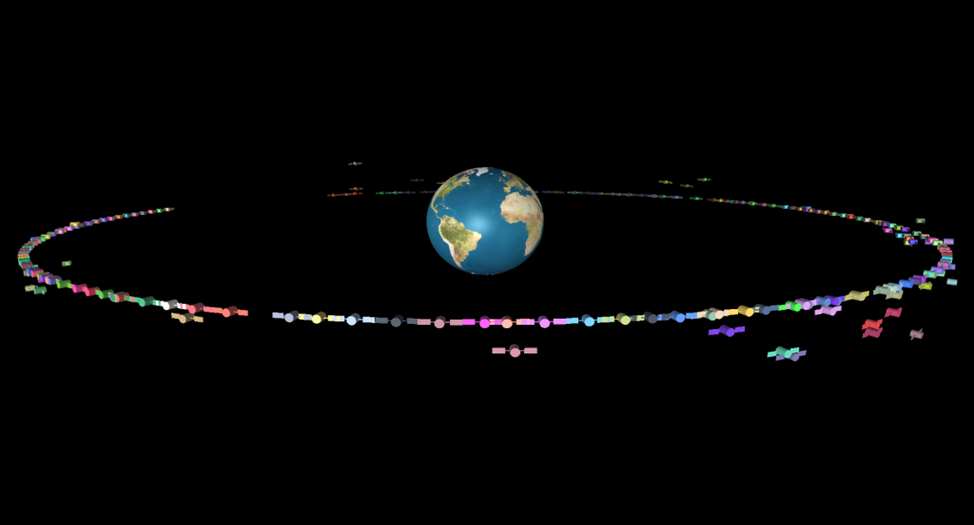
Most communications satellites are geostationary rather than geosynchronous. They are very similar in that their orbit also takes 24 hours to complete, however, geostationary satellites do not move. They are in a fixed point above the Earth’s equator. Video and TV communications use these as otherwise we would have to constantly be readjusting our satellite dishes.
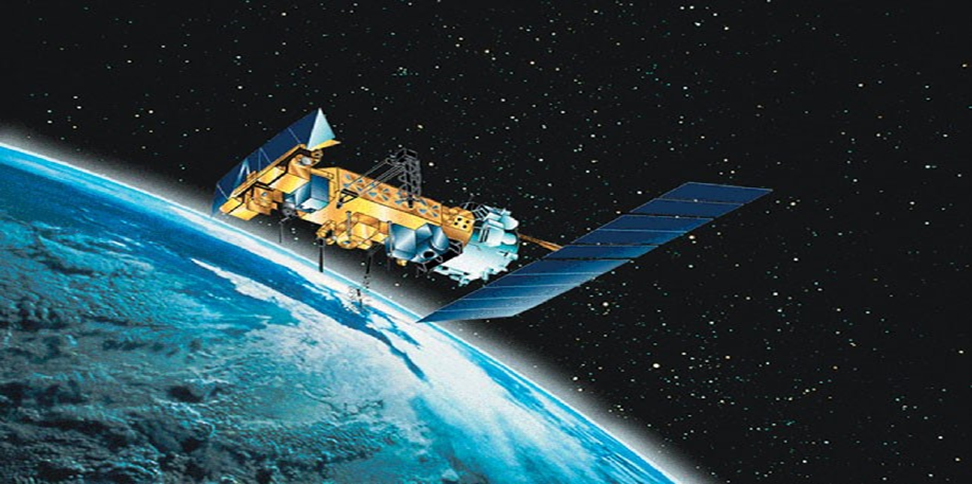
Geostationary satellites usually orbit at 35,788 km above the Earth’s surface. They generally weigh several thousand kilograms. Launch vehicles such as the Arianne Rocket or the Space Shuttle are used to put them in orbit. Once they are in place most satellites will take their power from the sun using huge solar panels, those who are being sent deeper into space will often carry a nuclear power supply.
1.4.1.1. Advantages/Merits of GEO Satellite
- Tracking of the satellite from Earth is easy.
- As satellite is stationary, Doppler frequency change can be avoidable between satellite and antenna on the Earth.
- About three satellites separated by 120 degrees can cover entire region of the earth except north/south poles.
1.4.1.2. Dis-advantages/Demerits of GEO Satellite
- Signal becomes weak after travelling such long distance delay is more, about 120 ms from Earth to the satellite. It will be about 240ms for double hop system i.e. from the Earth to the satellite and back to the Earth.
- Some of the regions such as polar region and north and south hemispheres are poorly served.
1.4.2. LEO Satellite
LEO satellite is located at about 500 to 1500 Km altitude. This type of satellite is visible for about 20 minutes from a fixed location on earth. The orbit period is about 1.5–2 Hours. Coverage diameter is approx. 8000Km.
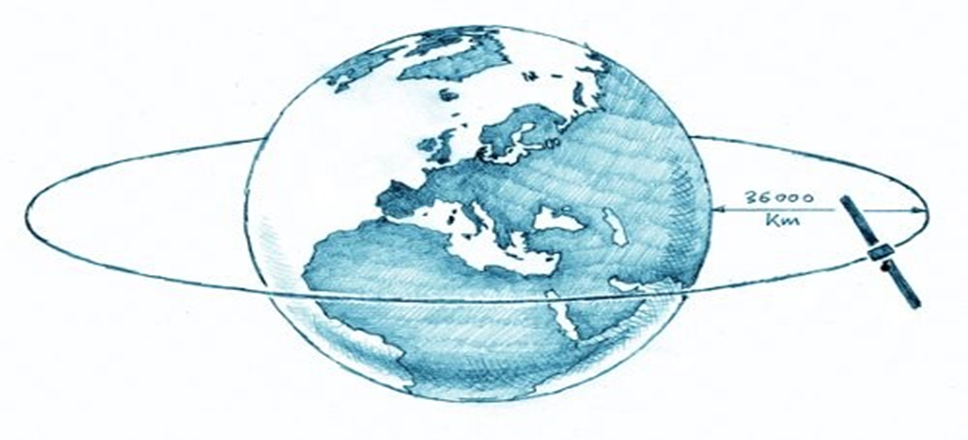
Satellites in low Earth orbits are usually use for military reconnaissance. This type of satellites can pick out a tank from 160 km above the Earth. They are in a very fast orbit; a complete lap of the Earth takes about 90 minutes. They are very short lived and need replacing often [3].
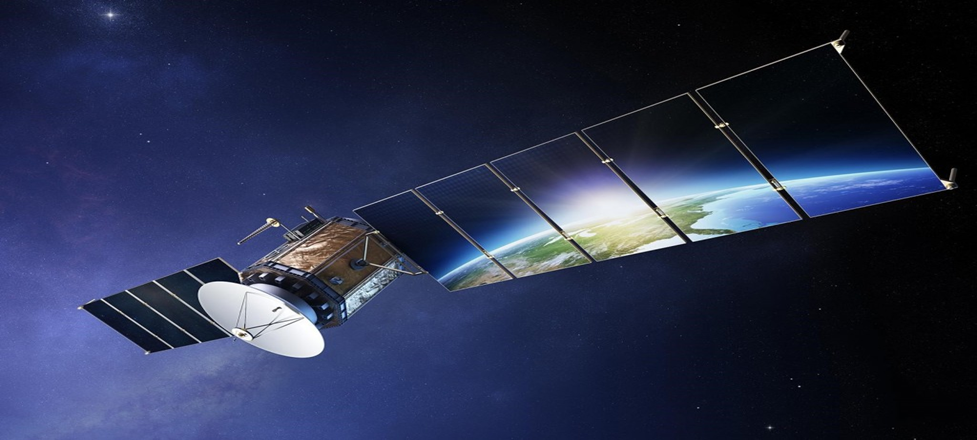
An example of a low earth satellite is the famous Sputnik 1, which was the first artificial satellite. It was launched by the Russians on the 4th of October 1957.

1.4.2.1. Merits of LEO satellite
- The signal power is good enough for earth terminals.
- The round trip delay also is less (about 20ms) due to its location at lesser altitude than GEO satellite.
1.4.2.2. Demerits of LEO satellite
- This LEO satellite system requires many such satellites to provide 24hr service on earth.
- Atmospheric drag is significant resulting in orbital deterioration gradually.
1.4.3. Geosynchronous satellites
This type of satellite is placed into an orbit which perfectly matched the earth’s rotation, so they take 24 hours to make a full lap. They are usually used for high latitude communications particularly over Russia and China. The orbits are elliptical, so that they appear to hover above the earth in the same point for most of the day. They move in a figure of eight pattern which is centered on a fixed longitude.

The first Geo-synchronous satellite was Syncom 2. Used for communications it was launched by NASA on the 26th of July, 1963 from Cape Canaveral.
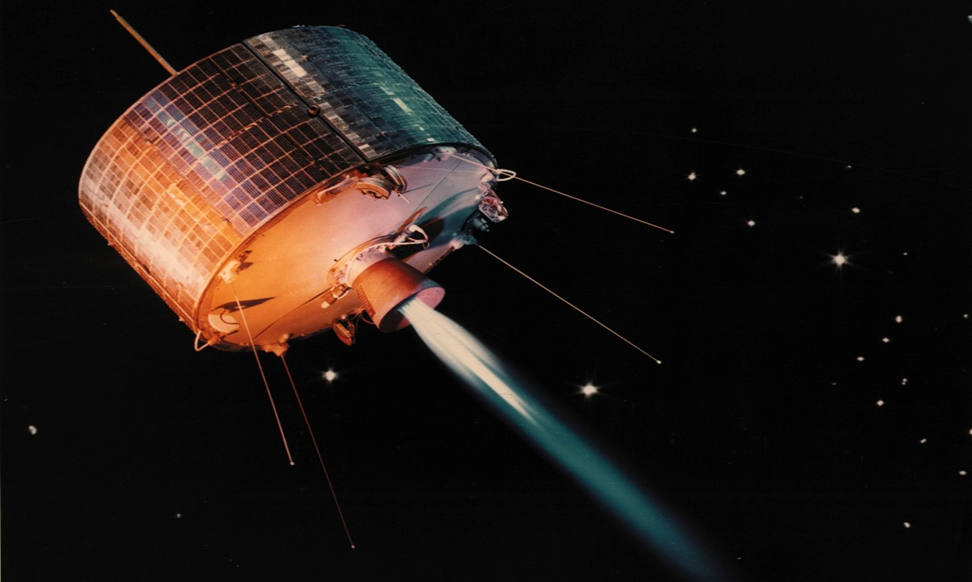
1.4.4. MEO Satellite
MEO satellite is located at the altitude of about 5000 to 12000 Km above earth. The orbit period is about 6 Hours. Coverage diameter is approx. 10000 -15000Km. Round trip delay is about 50ms.
1.4.4.1. Merits of MEO satellite
- This system of satellites requires much fewer handoffs compare to LEO satellites.
- Maximum visible time from earth is about few hours.
1.4.4.2. Demerits of MEO satellite
- Propagation delay is more compare to LEO satellites.
- Power required is also more than LEO satellites.
1.5. Satellite Launch Vehicles
Satellite launch vehicles launch the satellites into a particular orbit based on the requirement. Satellite launch vehicles are nothing but multi stage rockets. Following are the two types of satellite launch vehicles [3].
- Expendable Launch Vehicles (ELV)
- Reusable Launch Vehicles (RLV)
1.5.1. Expendable Launch Vehicles
Expendable launch vehicles (ELV) get destroyed after leaving the satellites in space. The following image shows how an ELV looks.
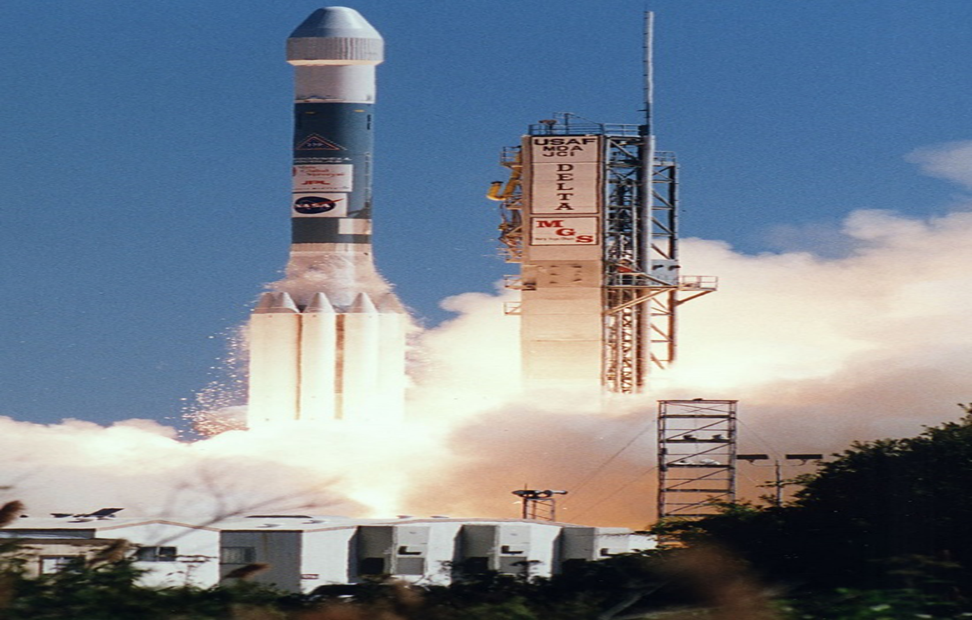
The ELV contains three stages. First and second stages of ELV raise the satellite to an about 50 miles and 100 miles. Third stage of ELV places the satellite in transfer orbit. The task of ELV will be completed and its spare parts will be fallen to earth, when the satellite reached to transfer orbit.
1.5.2. Reusable Launch Vehicles
Reusable launch vehicles (RLV) can be used multiple times for launching satellites. Generally, this type of launch vehicles will return back to earth after leaving the satellite in space.
The following image shows a reusable launch vehicle. It is also known as space shuttle.
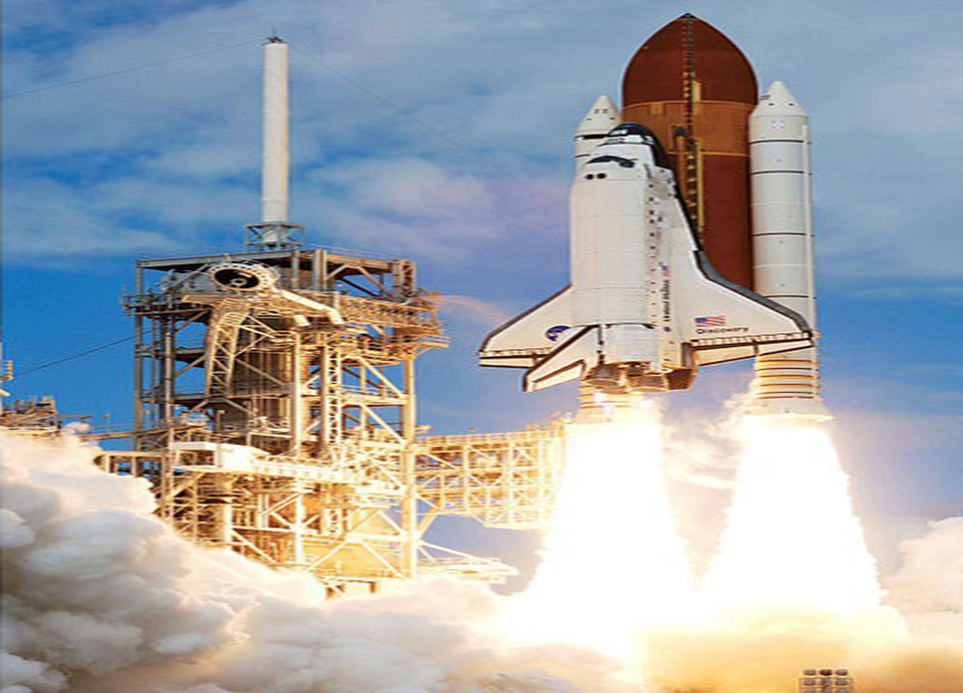
The functions of space shuttle are similar to the functions of first and second stages of ELV. Satellite along with the third stage of space shuttle are mounted in the cargo bay. It is ejected from the cargo bay when the space shuttle reaches to an elevation of 150 to 200 miles.
Then, the third stage of space shuttle gets fired and places the satellite into a transfer orbit. After this, the space shuttle will return back to earth for reuse [3].
1.6. Launching of Satellites
The process of placing the satellite in a proper orbit is known as launching process. During this process, from earth stations we can control the operation of satellite. Mainly, there are four stages in launching a satellite [4].
Following are the major steps involved in the launch process.
Step-1: The launch vehicle takes the satellite into low earth orbit. The satellite is injected into desired 3-axes stabilized mode to achieve gyro condition using commands issued by launch vehicle to carry pyro firing.
Step-2: After satellite reaches apogee AKM is fired for long duration to take satellite to intermediate orbit. This intermediate orbit is referred as transfer orbit. AKM is the short form of Apogee Kick Motor which contains liquid fuel.
Step-3: The second apogee motor firing is carried out so that satellite attains needed angular velocity and acceleration for Geo-synchronization. This helps satellite to be in LOS from central earth stations. If required, it is tracked through other countries earth stations.
Step-4: Further stabilization and attitude control is achieved using control of momentum/reaction wheels. Antennas and transponders are turned on which brings satellite into stabilized geostationary orbit. Examples of geostationary satellites are INTELSAT, COMSAT, INSAT etc.
Once the satellite is placed in the parking space (i.e. designated orbit), following activities need to be performed as part of maintenance.
- Orbit maintenance
- Attitude maintenance
- Thermal management
- Power management
- Battery maintenance
- Payload operations
- Software requirement [5].
Note: Some of these operations are routine in nature whereas some are scheduled as and when require
1.7. The main steps in launching of a satellite
The main steps in launching of a satellite are:
- The launch vehicle carries a satellite into space
- Once in space, the satellite is separated from its carrier
- Once on its own, the satellite is directed by its propulsion systems to reach the correct orbit
- Once in the correct orbit, the satellite is considered successfully launched but not operational
- To be operational, the satellite goes through a series of tests and system activations
- Once operational, the satellite starts serving its users
- Redundant hardware is usually installed in satellites for fault tolerance
- Satellites are built with technology that takes into consideration harsh space conditions
References
[2]“https://www.nasa.gov/audience/forstudents/5-8/features/nasa-knows/what-is-a-satellite-58.html,"
[3] “https://star-name-registry.com/,"
[4]“https://www.rfwireless-world.com/Tutorials/satellite-types.html,".
[5]“tutorialspoint.com/satellite communication/satellite_communication_launching.htm,”.
[6]“https://www.rfwireless-world.com/Tutorials/satellite-launch-procedure.html,".
[7]“https://www.tutorialspoint.com/careers-in-virtual-reality,".






